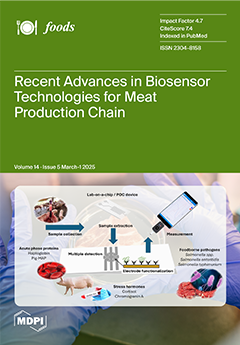Medicinal plants and natural compounds have been considered alternative therapeutic options for counteracting postmenopausal disorders thanks to their different concomitant effects, including antioxidant and anti-inflammatory properties and the regulation of hormone activity. It is important to highlight that the efficacy of medicinal plants
[...] Read more.
Medicinal plants and natural compounds have been considered alternative therapeutic options for counteracting postmenopausal disorders thanks to their different concomitant effects, including antioxidant and anti-inflammatory properties and the regulation of hormone activity. It is important to highlight that the efficacy of medicinal plants and natural compounds increases when used in combination, thus making the development of herbal formulations rational. Therefore, the present study aimed to evaluate the phytochemical and pharmacological properties of an innovative formulation consisting of resveratrol and water extracts from
Equisetum arvense,
Crateagus curvisepala,
Vitex agnus-castus, and
Glycine max. The phenolic composition and radical scavenger properties were evaluated using chromatographic and colorimetric (ABTS) methods, whilst the limits of biocompatibility were assessed through allelopathy, the
Artemia salina (brine shrimp) lethality test, and
Daphnia magna cardiotoxicity assay. The protective effects were evaluated on C2C12 cell lines exposed to the pro-oxidant stimulus, which consisted of hydrogen peroxide. The gene expression of estrogen 1 (ESR1, also known as ERα) and prolactin (PRLR) receptors, interleukin 6 (IL-6), tumor necrosis factor α (TNFα), and receptor activator of nuclear factor kappa-Β ligand (RANKL) was measured. The results of the phytochemical analysis showed that the main phytochemicals were hydroxycinnamic and phenolic acids, in particular coumaric acid (7.53 µg/mL) and rosmarinic acid (6.91 µg/mL), respectively. This could explain the radical scavenger effect observed from the 2,2-azinobis (3-ethylbenzothiazoline-6-sulfonic acid) (ABTS) assay. According to the ecotoxicological models’ results, the formulation was revealed to be non-toxic, with a LC
50 value > 1 mg/mL. Therefore, a biocompatible concentration range (200–1000 µg/mL) was used in C2C12 cells, where the formulation blunted the hydrogen peroxide-induced upregulation of TNFα, IL-6, RANKL, ESR1, and PRLR. Overall, the results of this study corroborate the use of the formulation for facing the oxidative stress and inflammation, which forms the basis of the osteoclastogenic process.
Full article






